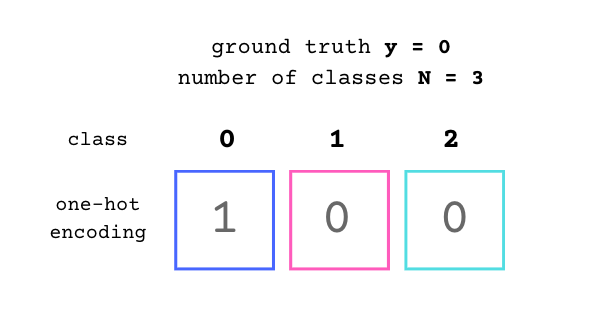Évaluer les prédictions avec une fonction de perte
Introduction au deep learning avec PyTorch

Jasmin Ludolf
Senior Data Science Content Developer, DataCamp
Pourquoi avons-nous besoin d’une fonction de perte ?
- Indique la performance de notre modèle pendant l’entraînement
- Prend une prédiction de modèle $\hat{y}$ et une vérité terrain $y$
- Produit une valeur flottante
$$

Pourquoi avons-nous besoin d’une fonction de perte ?
- Classe 0 : mammifère, classe 1 : oiseau, classe 2 : reptile
| Poils | Plumes | Œufs | Lait | Nageoires | Pattes | Queue | Domestique | Taille du chat | Classe |
|---|---|---|---|---|---|---|---|---|---|
| 1 | 0 | 0 | 1 | 0 | 4 | 0 | 0 | 1 | 0 |
$$
- Classe prédite = 0 -> correcte = faible perte
- Classe prédite = 1 -> erronée = perte élevée
- Classe prédite = 2 -> erronée = perte élevée
$$
- Notre objectif est de minimiser les pertes
Concepts d’encodage one-hot
- $loss = F(y, \hat{y})$
- $y$ est un nombre entier unique (étiquette de classe)
- Par ex. $y=0$ lorsque $y$ est un mammifère.
- $\hat{y}$ est un tenseur (prédiction avant softmax)
- Si N est le nombre de classes, par exemple N = 3
- $\hat{y}$ est un tenseur à N dimensions,
- par ex. $\hat{y}$ =
[-5.2, 4.6, 0.8]
- par ex. $\hat{y}$ =
Concepts d’encodage one-hot
- Convertir un nombre entier y en un tenseur de zéros et de uns

Transformation des étiquettes par encodage one-hot
import torch.nn.functional as F
print(F.one_hot(torch.tensor(0), num_classes = 3))
tensor([1, 0, 0])
print(F.one_hot(torch.tensor(1), num_classes = 3))
tensor([0, 1, 0])
print(F.one_hot(torch.tensor(2), num_classes = 3))
tensor([0, 0, 1])
Perte d’entropie croisée dans PyTorch
from torch.nn import CrossEntropyLoss scores = torch.tensor([-5.2, 4.6, 0.8]) one_hot_target = torch.tensor([1, 0, 0])criterion = CrossEntropyLoss()print(criterion(scores.double(), one_hot_target.double()))
$$
tensor(9.8222, dtype=torch.float64)
Récapitulatif
La fonction de perte prend :
- scores : prédictions du modèle avant la fonction softmax finale
- one_hot_target : une étiquette de vérité terrain encodée en one-hot
Résultats de la fonction de perte :
- perte : un seul flottant

Passons à la pratique !
Introduction au deep learning avec PyTorch

